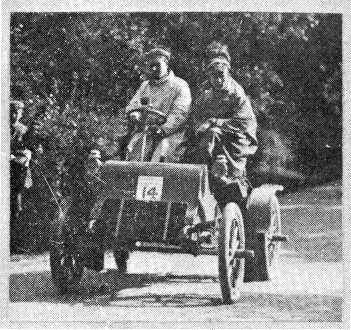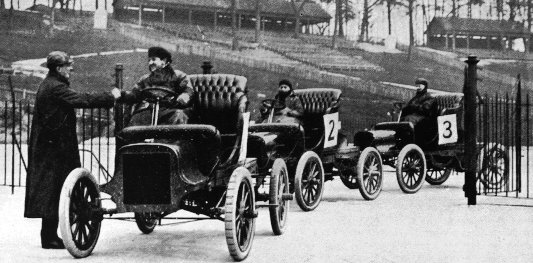Cadillac in England
Today the Cadillac comes to England. The University of Houston's College of Engineering presents this series about the machines that make our civilization run, and the people whose ingenuity created them.
Victorian England boasted that the sun never set on its empire, that Britannia ruled the waves, and that English manufacturing was without peer. Civilization seemed to go downhill in all directions away from London. In 1900 England took its leadership in powered machinery for granted.
But that leadership was built on steam. English engineers disdained internal combustion. Worse than that, says author Maurice Hendry, the upper classes saw the development of personal vehicles as a threat to the class system. The best of the early automobiles in England were European. England looked at American products with open contempt, and no one imagined that America could produce a decent automobile -- not even most Americans.
In 1903 a young Englishman, Frederick Bennet, worked for an auto import firm. On a hunch, he imported one of the new Cadillac autos. He uncrated this 6½-horsepower one-cylinder touring car and directly entered it in the Midland Automobile Club Hill Climb in London. This sort of competition was teaching a fascinated general public about automobiles.
Bennet's little Cadillac chuffed right up the hill at 8 miles an hour. He won the competition over cars with three times the power, and then he took his car on to win other competitions. He convinced people; but he faced another problem when it came to selling the car. If an auto broke down in England, the owner could send it in to have a new part "fitted." Up to then, auto parts were only approximately interchangeable. Factory experts had to file and hammer parts to fit the car. American factories and mechanics were too far away for that.
So Bennet had to teach the English another lesson. In 1908 he asked officials to select three cars from a set of eight new Cadillacs. Each of the three was publicly dismantled into 700 parts. The parts were thoroughly mixed up and then reassembled. They fit perfectly into three composite cars. These cars were driven off to the starting line of yet another competition -- looking like three circus clowns in their mixed-up colors.
Bennet made his point. No one had thought cars could be made by mass production with interchangeable parts. These early Cadillacs pioneered that technology, and they opened the British market to American cars.
But more important than that, they overcame our own inferiority complex. They also cracked open the American market for American manufacturers. These proud little machines were stalking horses for the fleets of Fords and Oldsmobiles that would transform American life by 1920.
I'm John Lienhard, at the University of Houston, where we're interested in the way inventive minds work.
(Theme music)
Hendry, M. D., Cadillac, Standard of the World: The Complete Seventy-Year History. New York: Automobile Quarterly Publications/Dutton, 1973.

(Image courtesy of Cadillac)
Bennet driving his 1903 Cadillac in England

(Image courtesy of Cadillac)
Bennet's three Cadillacs with their intermixed parts (Too bad the photo isn't in color!)